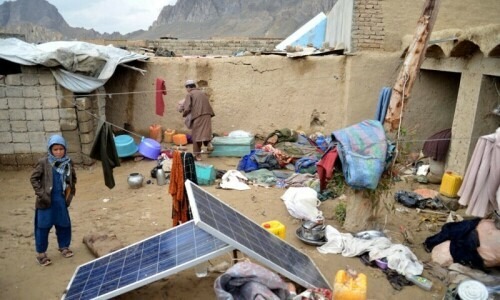The government’s disaster management service announced on Sunday that at least 33 people had died in Afghanistan over the course of three days of intense rain and flash flooding.
According to department spokeswoman Janan Sayeq, “from Friday onward, because of the rains, there were flash floods which caused high human and financial losses.”
“The main data indicates that, regrettably, there were 33 fatalities and 27 injuries during the floods.”
Around 600 homes were damaged or completely destroyed, some 600 kilometers of roads were devastated, and about 2,000 acres of agriculture “flooded away,” according to Sayeq. The majority of the injuries were caused by roof collapses.
After an exceptionally dry winter that dried the land and pushed farmers to postpone planting, the nation’s 34 provinces saw strong rainfall that hit about 20 of them.
Foreign help to the impoverished nation has significantly decreased since the Taliban retook power in 2021, making it more difficult to provide relief during natural calamities.
In eastern Afghanistan, heavy snowfall in February caused a landslide that claimed at least 25 lives, and a three-week period of precipitation that ended in March claimed the lives of about 60 people.
“Afghanistan is experiencing major swings in extreme weather conditions,” the UN said last year.
According to scientists, climate change is causing extreme weather patterns, and Afghanistan, which has suffered greatly from four decades of conflict, is one of the countries least equipped to deal with the situation.








